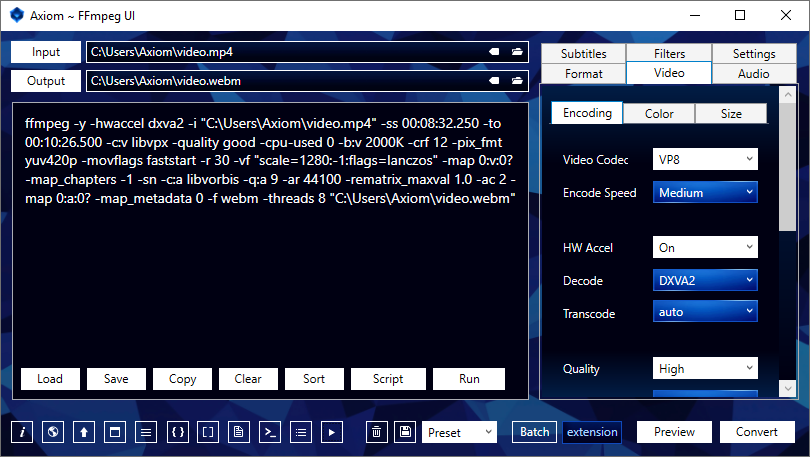


in this example, the first file has video stream 0 and audio stream 0 and the second file has video stream 0 and audio stream 0. tells ffmpeg which stream from the input file to use and then send to the concat filter. To break down the command, first specify all the input files, then instantiate a -filter_complex filtergrap h Suppose there are three files to be concatenated, each with a video stream and an audio stream.įfmpeg -i input1.mp4 -i input2.webm -i input3.mov \ 1920*1080 pixels) and have the same framerate. In some cases, multiple files may use different encodings, then none of the above commands will work.įor concat filter to work, the input files must have the same frame size (eg. The following command concatenates three MPEG-2 TS files together, without re-encoding.įfmpeg -i "concat:input1.ts|input2.ts|input3.ts" -c copy output.t sĬoncatenating files with different encodings Specific files (such as MPEG-2 transport streams, or others) can be concatenated. If you have multiple files to add to the mylist.txt file, you can use a Bash script to generate them in bulk:įor f in *.wav do echo "file '$f'" > mylist.txt doneĭemuxer works at the file stream level, concat protocol works at the file level. The -safe 0 can be omitted here if the path is relative. The file paths in the file can be absolute or relative, and then you can use FFmpeg to stream-cop y or re-encode (re-encode) the multiple files as followsįfmpeg -f concat -safe 0 -i mylist.txt -c copy output.wav
Note that the # here is a comment statement. The protocol, on the other hand, requires the containers to be in the same format as well.ĭemuxer reads a list of files from a fixed format file, and FFmpeg can then process these files together.Ĭreate the file mylist.txt containing all the files you want to concatenate. It can be used mainly to merge multiple media files.Ĭoncatenating multiple files of the same encodingįFmpeg has two ways to concatenate identical files.ĭemuxer is more flexible, it needs the same encoding and the container format can be different. The concat demuxer was introduced in FFmpeg 1.1. This is where FFmpeg's concat demuxer comes into play. For example, merging multiple videos into one video file, merging multiple audio files and one long audio file. FFmpeg can use the -i parameter to input one or more files, but there are times when there is some need to concatenate multiple files into one file.


 0 kommentar(er)
0 kommentar(er)
